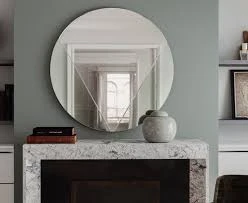

Understanding Float Annealed Glass A Comprehensive Overview
Float annealed glass, a widely used material in construction and design, plays a crucial role in various applications, ranging from architectural elements to functional products. This type of glass is known for its superior clarity, smooth surface, and versatility, making it a preferred choice in both residential and commercial environments. In this article, we will explore what float annealed glass is, its manufacturing process, benefits, and its typical applications.
What is Float Annealed Glass?
Float glass is a type of flat glass that is formed using the float process, which involves floating molten glass on a bed of molten tin. This innovative technique ensures a uniform thickness and a smooth, defect-free surface. Once the glass has been formed, it undergoes an annealing process. Annealing involves slowly cooling the glass to relieve internal stresses that were introduced during the manufacturing process. The combination of these methods—floating and annealing—result in a product that is not only aesthetically pleasing but also structurally sound.
The Manufacturing Process
The production of float annealed glass begins with raw materials, primarily silica sand, soda ash, and limestone. These ingredients are melted in a furnace at temperatures exceeding 1,700 degrees Celsius (approximately 3,092 degrees Fahrenheit). The molten glass is then poured onto a layer of molten tin in a controlled environment. Because glass is less dense than tin, it spreads out on the surface, resulting in a smooth, flat sheet of glass.
Once the desired thickness is achieved, the glass is slowly cooled through the annealing lehr, a long furnace that maintains a controlled temperature gradient. This gradual cooling process removes any internal strains, crucial for ensuring the glass's durability and resistance to breakage. The end product is a clear, high-quality glass sheet that can be cut to size according to specific requirements.
Benefits of Float Annealed Glass
Float annealed glass offers several advantages that make it a favored choice among architects, designers, and builders
1. Clarity and Quality The float process results in glass that is exceptionally clear, allowing for maximum light transmission. This clarity is pivotal in applications such as windows, where visibility is essential.
2. Smooth Surface The glass produced through the float process has a smooth surface that is free from distortions, making it ideal for applications that require precision, such as mirrors and display cases.
3. Versatility Float annealed glass can be easily cut, tempered, or coated, providing versatility for a wide range of uses. It can also be laminated or colored, expanding its applications further.

4. Cost-Effectiveness Compared to other types of glass, float annealed glass is relatively economical. This affordability, combined with its durability, makes it an attractive option for large-scale projects.
5. Eco-Friendly The float glass manufacturing process can use recycled glass, and the end product is fully recyclable, contributing to more sustainable building practices.
Applications of Float Annealed Glass
Float annealed glass has a multitude of applications across various sectors
1. Architecture and Construction It is commonly used in building facades, windows, and glass doors. Its aesthetic qualities enhance the visual appeal of structures while providing functional benefits like natural lighting and energy efficiency.
2. Automotive Industry While tempered glass is more frequently used for safety reasons, float glass may be used in certain vehicle components, such as interior elements and decorative features.
3. Furniture and Interiors Float annealed glass is prevalent in furniture design, where it is used for tabletops, shelving, and displays. It creates a modern and sleek appearance that complements various interior styles.
4. Signage and Displays The clarity and smoothness of float annealed glass make it ideal for showcases and visual displays, allowing products to be presented clearly and attractively.
5. Interior Partitions In commercial spaces, glass partitions made of float annealed glass are favored for their ability to create open, airy environments that maintain privacy without sacrificing light.
Conclusion
Float annealed glass is a remarkable material born from innovative manufacturing processes that emphasize quality and versatility. Its unique properties make it an essential component in architecture, furniture, automotive, and numerous other industries. As technology advances and sustainable practices become more prevalent, the demand for float annealed glass is likely to continue growing, solidifying its place as a staple in modern design and construction.